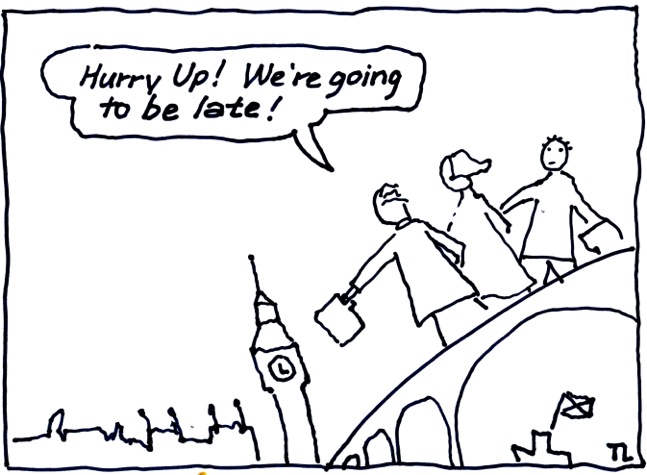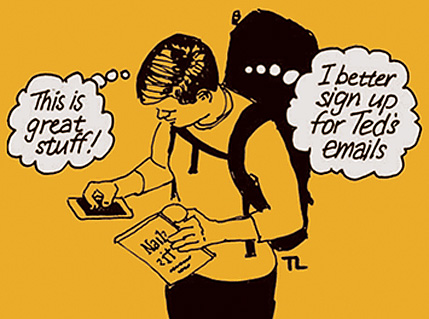How to Turn a Moment of Weakness into a Strength

Fred is the owner of a small design firm. His work has recently become recognized for using design thinking to build brands through social media. A result of the media attention is an invitation to pitch one of the world’s largest corporations, headquartered in the UK. It’s a career-making opportunity for Fred and his firm. But he is new to this level and knows that he must deal with his own anxieties to be successful.
Fred is thrilled and terrified at the same time as he steps off the plane in London with his team. He knows that he has one advantage over his competitors: He’s been included in this competition late in the process (always a good sign). So late in fact, that some players were eliminated before his firm was included. The field is now down to his firm and three other finalists. All three are global players and much more experienced with international competitions than Fred.
The next day Fred and team are ushered into the client’s reception area to discover their competitors also waiting. Fred feels his vision narrow as he and shakes hands with everyone. He mumbles pleasantries but confesses later that he can’t remember what he said to whom. To Fred they all seem smarter, better dressed and better looking than his little team as he feels the perspiration under the newly pressed shirt and thinks, “I hope I don’t smell like fear.”
The teams are individually ushered into the conference room to emerge after an hour. With each departure Fred can hear in the tone of their voices the reduction in tension that he’d sensed in the reception area. The feelings of relief are almost physical. Feeling slightly light-headed, Fred and his group are finally escorted into the conference room. Once in the room, feeling a bit better, he makes small talk with their hosts while his team sets up their laptop, speakers and projector.
Then, his creative director whispers, “Fred, there’s no power in this room.”
“What? No outlets? How did the others present?” Fred asked, then turn to the client: “There seems to be no electrical outlets.”
The client responds: “That’s right. All the outlets are beyond that movable wall. Unfortunately, the other meeting rooms and the other half of this room are in use. The other teams just used their laptops to present. Let’s do that.”
Fred feels his stomach react, but with that churning feeling realizes that this provides a chance to take charge. “I’m sorry, we can’t do that. We’ve prepared a response to your position using sound, film, and interactive media to demonstrate how to reach, engage, and predict your interest groups’ behaviors.”
The client pushed back with: “Our online presence is all through mobile devices and computer screens. That’s the medium. So you should be able to show us through a laptop.”
“But you are a group of eight. To get the full benefit of our insights you need to experience the presentation simultaneously. Only by experiencing it together will you understand our offer and effectively evaluate how our approach will help you.” Throughout this exchange Fred felt his strength and resolve return. He knew he was taking the right approach.
With that, they sent for an extension cord. Now Fred’s team was able to relax and interact with the client team with talk of the city, the weather, challenges the company faced, and issues surrounding the rapidly changing world of social media, while gazing over the Thames and that dramatic London skyline. It was a pleasant fifteen minutes.
The cord arrived. Fred and team presented and ultimately won the assignment.
So what did Fred and team learn from this experience?
- Use feelings of anxiety as a signal that the issue is important — that you need to consider your next steps carefully.Fred could have given into those feelings. He could have just said, “sure, no problem, gather around my laptop.” That’s called rolling over, and in moments of distress it’s easy to give in and just give the client what they asked for.
- Taking control in a way that is clearly in the client’s best interest reinforces your status as an expert by sending a message that you will manage the project with a high degree of professional confidence.It’s very important that everything you do is in the client’s best interest. The effort you put into preparing — the thinking, the writing, the film, and presentation slides — is all about showing the client the solution to their problem. To not present it in the best light is do the client a disservice.
- It’s not about the power cord, it’s about power.Saying no is very powerful. It gets people attention. It gets everyone to rethink their assumptions. Clients want their highly-paid consultants to be powerful and confident.
The confidence that comes from professional expertise is what clients expect. That confidence will serve your client well as you interact with others on the client team. Your client’s judgment will be respected and reputation enhanced because he/she selected a professional, confident team.
When all is said and done, taking control when you are feeling weak makes you strong.
This post originally appeared on How Design.

